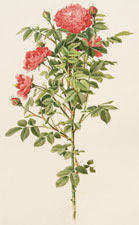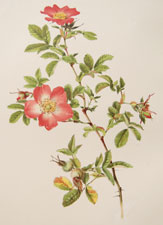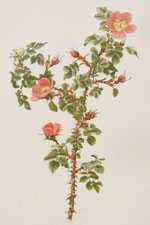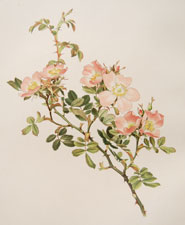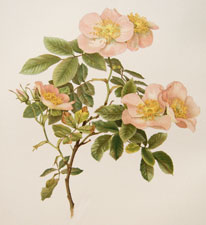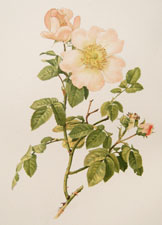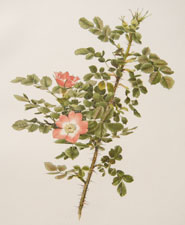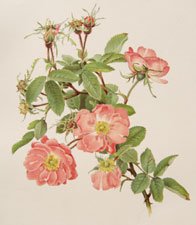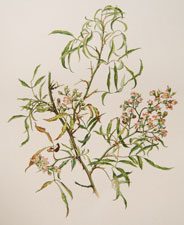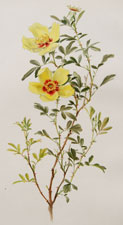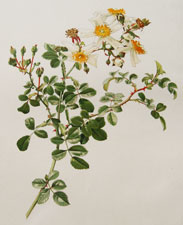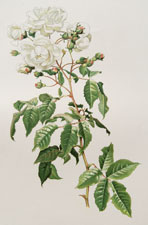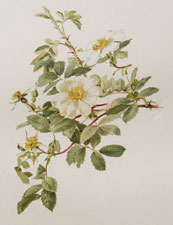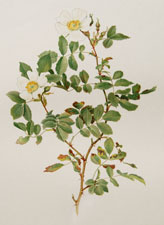The Genus Rosa was the masterpiece of Ellen Willmott and the culmination of a lifetimes’ study of the species. It ranks with Redoute’s Les Roses as one of the definitive and most beautiful works on roses and remains an important reference for rosarians today.
Ellen Willmott was an eccentric and wealthy woman as well as a fanatical horticulturist and landscape designer. Through her wealth, she was able to finance many plant expeditions and was honoured by certain species being named after her.
She resided at Warley Place from the age of 17, developing a spectacular garden over the course of many years. Active in the Royal Horticultural Society, she was awarded the Medal of Honour in 1907. At one time, she employed as many as 100 gardeners for properties stretching from Warley Place to France and Italy. Always eccentric, she scattered seeds of the sea holly, Miss Willmott’s Ghost, wherever she traveled, including friend’s gardens. Sadly, in later life, she became penniless and increasingly eccentric, booby-trapping her garden against plant thieves and carrying a revolver. Her beautiful home and garden at Warley Place was sold to pay her debts when she died in 1934 and ultimately demolished. Today, her land is leased to the Essex Wildlife Trust and all traces of her magnificent garden are gone.
The Genus Rosa, published in parts between 1910-1914, and now a very rare work indeed, is her remarkable legacy to print and rose-lovers of today. The superbly artistic renderings of each rose are the work of Alfred Parsons (1847-1920), an English landscape painter and illustrator, and demonstrate a sensitivity offline and form rarely equaled in the illustration of the rose. |


